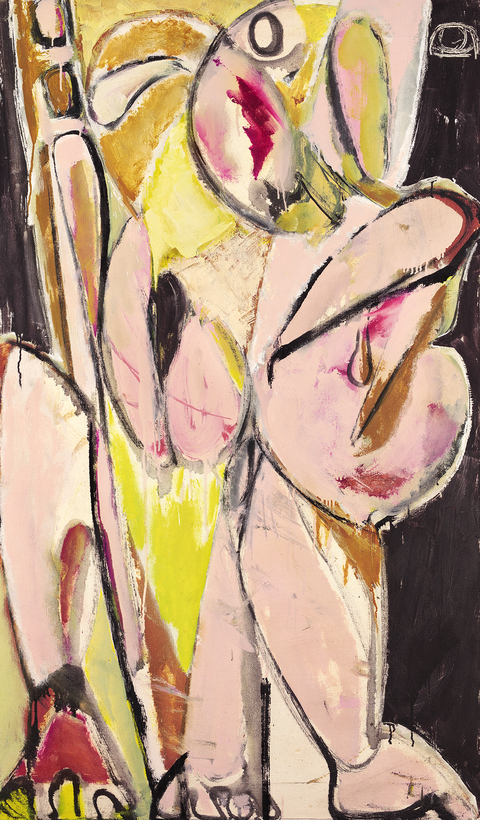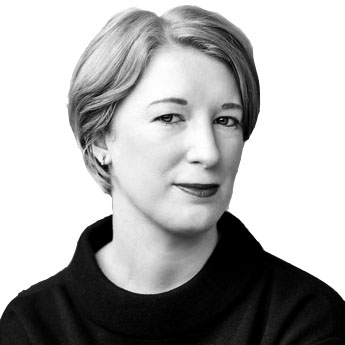The Provençal town of Mougins—a petite, picturesque spiral perched on a hilltop between Cannes and Grasse—has proved irresistible to many artists, among them Francis Picabia, Fernand Léger, Jean Cocteau, Isadora Duncan, and Man Ray. The protean Pablo Picasso spent the last 12 years of his life in a palatial villa just outside the town. In a move calculated to roll the big man over in his grave (which is not in Mougins, as the mayor is said to have refused the burial of the “billionaire communist”), the town is now home to the first private museum in Europe exclusively dedicated to art created by women. Visitors to Femmes Artistes du Musée de Mougins (FAMM), which opened its doors at the end of June, pass by a giant sculpture of Picasso’s head on their way into the museum, where striking portraits by his lovers Dora Maar and Françoise Gilot side-eye each other across a gallery on the third floor.

It’s an eye-catching endeavor on the part of the art collector Christian Levett, who showcased his collection of classical antiquities in this space—which was known as the Mougins Museum of Classical Art—from 2011 until last year.
But what to make of a collection of women’s art assembled by a wealthy white man, a project that feels at once impossibly broad and strangely narrow. The museum displays just over 100 artworks, around a fourth of Levett’s collection of pieces made by women. Yet somehow that bold mission combined with an intensely focused execution—only one to five works by each artist—produces a revelatory vision of women’s creative power.
With chiaroscuro sass, Juana Romani’s arresting portrait Hérodiade (circa 1890) commands the ticket hall. From there the journey begins with a handful of works by women who were integral to the Impressionist movement, including Berthe Morisot and Mary Cassatt. It then moves chronologically through Surrealism and Abstract Expressionism, one of the richest areas of Levett’s collection, featuring work by Lee Krasner, Helen Frankenthaler, and Howardena Pindell. Glowing darkly in the back stairwell, Pindell’s immense, untitled 1971 canvas is a mass of brown, blue, and orange circles—visual abstractions invoking the “Black only” designations of segregation.

Less formally chronological is the top-floor gallery of figurative art, where Frida Kahlo’s plaster body cast turned sculpture, Hammer and Sickle (and Unborn Baby), keeps company with photographs by Marina Abramović, Carrie Mae Weems, and Shirin Neshat. There’s also a stunning 2018 self-portrait by the Brooklyn-based French photographer Delphine Diallo. At FAMM’s opening, Diallo described the honor of seeing her work placed in the company of her peers as well as her heroines—a reminder of the lineages and communities through which women artists have found their vision and forged their place.
In person, Levett brims with enthusiasm for the art he’s assembled. And he’s modest about his own role, denying any “social mission” beyond the simple one of demonstrating, through this judicious sampling, the richness and variety of art that happens to be made by women. Indeed, other than titles, names, and dates, there’s little biographical or historical context provided on the gallery walls, although an accompanying booklet gives more detail in the artists’ own words.

In a departure from many well-meaning female-centered exhibitions, this museum does not overload viewers with stories of adversity, or with blunt statistics of women’s exclusion from art history and their de-valuation in the contemporary market. It feels wonderfully, unexpectedly freeing to wander among the art without that nagging, stone-in-shoe awareness of inequality and imbalance. In Diallo’s view, which many visitors will no doubt share, FAMM is special—less a museum than a temple, a place of communion with the spirit of the artists who have always been there, whether or not we knew their names.
Femmes Artistes du Musée de Mougins (FAMM) is open now in Mougins, France
Joanna Scutts is the author of The Extra Woman: How Marjorie Hillis Led a Generation of Women to Live Alone and Like It and Hotbed: Bohemian Greenwich Village and the Secret Club That Sparked Modern Feminism


